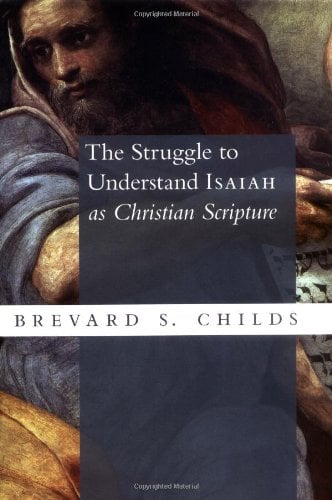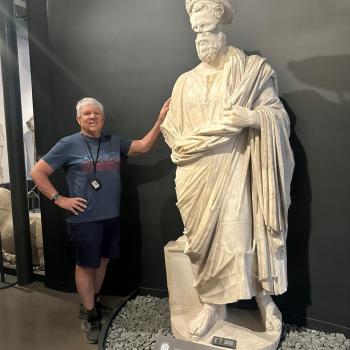According to Gerhard Ebeling church history is the exposition of Scripture. As Childs says in his conclusions, no one interpretative schema, singular creedal formula, or philosophical or theological system has been employed throughout the ages to make sense of Isaiah. There are however what he calls discernable characteristic features to the way Christians interpret the text, a positive repeated pattern if you will. First, and perhaps most obvious is the assumption that the Bible is the Word of God, inspired by God’s Spirit. Put another way, God is the primary author of the Bible. One of the main reasons the Gnostics are so strongly attacked by Irenaeus is because of their denegration of the OT. It was Irenaeus as well who helped shape the view that there is a single vision in both testaments and one story of salvation progressively revealed from creation to redemption to new creation with the latter two acts of the drama coming through Jesus. The development of the canon between the second and fifth centuries was an attempt to protect the privileged status of the sacred scriptures and make clear to one and all what they were. Notably the post-Reformation debates between Protestants and Catholics were not about the sacred Scriptures themselves so much as about the relationship of later Christian tradition to those Scriptures. What happened in modernity in the academy was that the Bible’s prophetic role was reformulated in that it was said to articulate shared ideals, in particular ethical ones, with non-Biblical sources, giving moral direction and offer values that both human experience and reason could affirm.
Childs argues that one of the most basic assumptions and characteristics of Christian exegesis is that the Bible has both a literal and a spiritual dimension to it (so John 3.14; Mt. 16.4; 1 Cor. 9.9; Rom. 3.31ff.) and that the OT should in the end be interpreted in light of the NT and what the NT writers say about it. Thus it has been said that we find a ‘transformed’ OT in the NT and in the use the NT writers make of it.
In all ages allegory is one tool Christians have always used to discern the mystery of Christ in the OT. But there has been enormous debate about the relationship of the literal and the spiritual sense of the Biblical text. The actual history shows that it is a caricature to say that the Alexandrians were the only allegorizers and that was all they were really interested in, while the Antiochenes were the precursors of modern historical exegesis, sticking strictly to the literal sense of the text. It is however true that the latter group wanted to avoid allegorical excess, and the former group too often imported philosophical notions into the discussion to get at the spiritual sense of the text as if in a Platonic sense it had both a literal level and a higher heavenly level as well. Irenaeus was helpful in providing the framework for a consistent theological interpretation of the whole Biblical story. It was to the Reformers credit that they stressed the plain sense of the text, interpreting it in its original contexts as a way of getting at the author’s real intentions. Calvin insisted that the literal sense was intertwined with its spiritual force and guidance and that the two shouldn’t be separated out from each other.
Childs stresses that there is a good reason for Christians to talk about an OT and a NT, for there is a progressive story with a before and after to it, and those labels help make this clear, especially since we believe there is a unified vision and one ongoing story in it all. Both testaments point forward to the coming final reign of God on earth. God’s relationship with human history, and in particular with his people has a goal, and thus all things leading to the goal have a purpose.
One of the problems with allegorizing of the OT is that it tends to silence the original voice, or overwhelm it, with later Christian ideas. Even calling Isaiah the fifth Gospel tends in this direction. Childs mentions that Luther’s letter vs. spirit, or Law vs. Gospel (where one could find Gospel in the OT as well as Law in the NT, it was a matter of how one read the text) seemed a fruitful way of reading the text to hold the two testaments together. Calvin preferred to say that the substance of God’s revelation in both the OT and NT was the same but the mode or manner of the revelation differed. One had to acknowledge this, and there was no need to allegorize the OT because the Triune God undergirded all, and had simply chosen to focus on basic concepts of justice and mercy and righteousness and faithfulness in relationship to his people in the OT, while reserving the revelation of full salvation and irrevocable forgiveness for later, in the NT.













